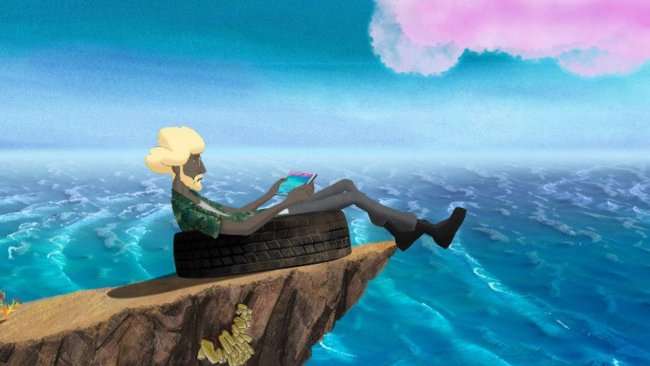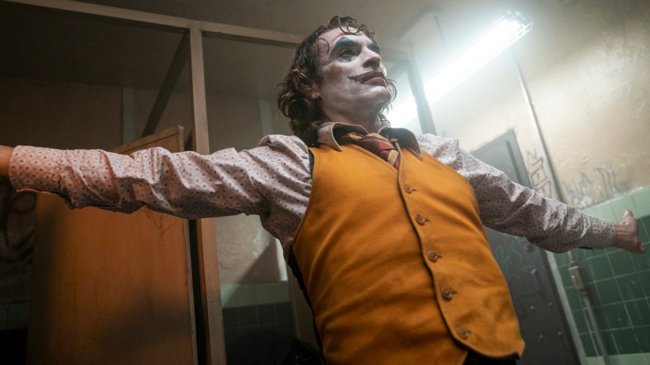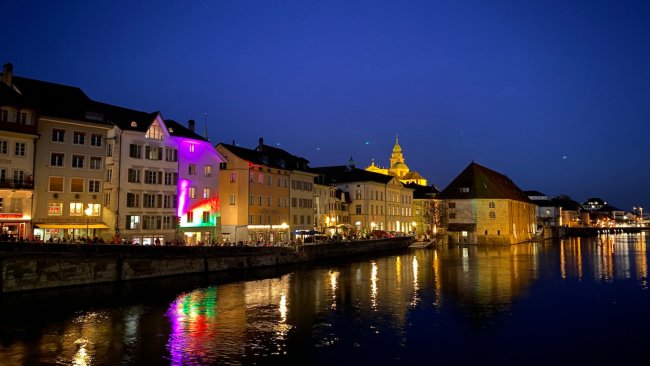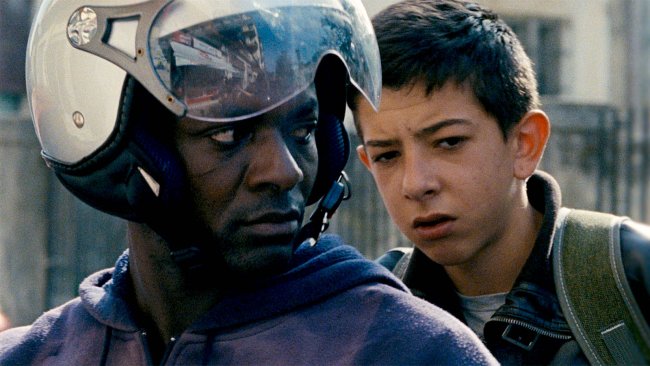Shahram Mokri | Fish and Cat
[…] We cannot really speak of realism in the case of «Fish and Cat», but of a specific reality that is made of delusions, suspensions, and of the preparation and delay of actions.
[…] «Fish and Cat» is also the story of a desired and difficult contact between two kinds of people, two generations, two visions of the world. More than the distinction between them, the movie dares to imagine the apparently impossible cohabitation of them: the cohabitation of crime and innocence.
[…] The incumbent presence of a possible conflict and crime is nothing but the incumbent presence of a regime that separates people, that makes them paranoid, that puts them in a space where fishes and cats cannot live peacefully.
Text: Giuseppe Di Salvatore
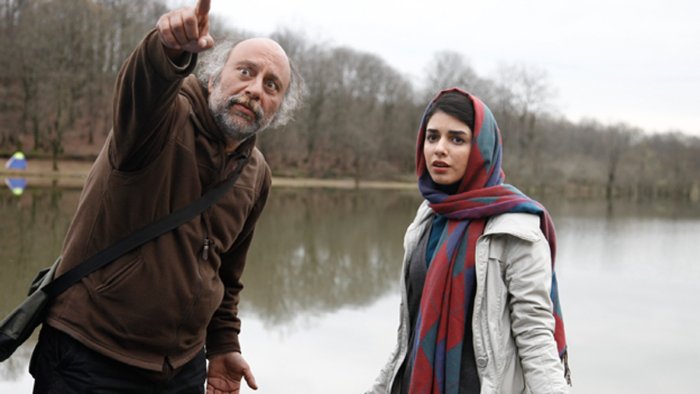
In the context of the open discussion that took place during the seminars of the conference «Image under Construction: Revolution of Forms in Iranian Cinema Before and After 1979» (organized by the Seminar für Medienwissenschaft at the University of Basel in collaboration with the Stadtkino Basel and the eikones Forum Basel), Shahram Mokri’s contribution, and specifically the role of his movie Fish and Cat, emerged as being very central. In his speech «Some Reasons for Birth of a New Generation», he himself stressed his consciousness of being an exponent of a new generation of filmmakers. Through exploitation of the digital medium, not only does this new generation find a way to escape the censorship of the Iranian regime, but it also seems to free itself of the contraposition between a State-controlled cinema and an intellectual western-orientated cinema. In fact, the digital revolution also implies a revolution in communication and in the network of distribution so that the new generation can naturally assume a global attitude and place itself, in Iran, as a new form of resistance against the regime through indifference towards it or through a new form of fighting it. Actually, I would like to note that Mokri’s plea for the digital era in Iranian filmmaking expresses nothing but the virtues of the private freedom against the public limitations, thus reflecting precisely on the sharp distinction (almost separation) between the private and the public that the Islamic regimes, in Iran and elsewhere, have promoted. So, we could say that the new and “cool” form of dissidence by the younger generation that has embraced the digital revolution remains largely dependent on the sharp distinction between private and public, for which (it is worth underlining) the Islamic order is following one of the most essential “inventions” of Western modernity…
But, hopefully Mokri’s movie, Fish and Cat – which was screened at the Stadtkino Basel and discussed in the conference at the eikones Forum –, offers a more complex picture of the distinctions underlying Iranian society and the conflicting way of discussing it. It is an image that challenges, with its ambiguity, the “modernist” (and Islamic) paradigms of interpreting society. To highlight this specific virtue of Fish and Cat, I will reflect on three of the many interesting aspects concerning this movie.
The film material in Fish and Cat is made up of just one long take. This amazing technical achievement is, in a way, coherent with the realism that generally characterizes the diverse Iranian cinematic traditions. But, the realist effect we gain through the single take compliments the dreamy matter of everything that is shot in this take. On one hand, the camera travels: accompanying and letting go of the different characters with a movement that is always only tangential to them and their stories; the camera never really catches them. On the other hand, the linearity of the camera’s movement reveals itself to be on a curve, even circular. We soon discover that we are trapped in several loops that give us the impression that we are suspended in time. The material of this reality is not only dreamy, but also “constructed”. The absence of cutting between frames is fulfilled by the cuts in the linearity of the camera’s movement. We cannot really speak of realism in the case of Fish and Cat, but of a specific reality that is made of delusions, suspensions, and of the preparation and delay of actions.
In this specific reality, even the spatial dimensions are challenged. We have the experience of making some discoveries and being trapped at the same time. The forest and lake constitute a non-urban open space, which in turn becomes a claustrophobic labyrinth of apories (the Greek word “a-poria” literally means “no way out”). Thanks to the intervention of Majid Eslami in the conference («The Lake against the Forest: Fish and Cat»), we recognize the metaphoric specificity of the forest and the lake. On one side: they are the place of predators, and cats, a place of hiding, of horror, and reality. On the other side: they are a place for the innocent, the fish, a place of openness, of melodrama, and the dream. Actually, I think that such a distinction, which describes the hunting relationship between cats and fishes, is only the starting point of a movie that, in fact, wants to blur this distinction. A confirmation of this is the physical contiguity of forest and lake. They share the same closed “looped” space; even the promiscuity of them. Fish and Cat is also the story of a desired and difficult contact between two kinds of people, two generations, two visions of the world. More than the distinction between them, the movie dares to imagine the apparently impossible cohabitation of them: the cohabitation of crime and innocence.
To recap: the first aspect is the complexity of the apparent realism conveyed by a movie made from just one take. The second is the description of this complexity in the spatial and metaphorical terms of the forest and the lake, stressing how the movie, more than on the distinction and conflict between fish and cat, is a reflection on their cohabitation, on the “and” of Fish “and” Cat. The third aspect I want to point out is that, in Fish and Cat, the ambiguity of the distinction between the fish and cat is doubled by the ambiguity of how effective the suspension of that distinction can be. Through the use of loops, Mokri seems to suspend the drama between the two worlds of cats and fishes; it is a way of suspending the incompatibility of crime and innocence. But, at some point we have the impression that we can escape the enclosure of loops, that the story can go forward, somewhere, that the action is finally coming, that there is a way out of this suspension. That is why the suspension is not the neutralization of tension: the young people and the hunters never get to be together, and the threads of a possible crime are never suspended. The suspension is always suspicion and suspense at the same time. From this point of view, the possibility of the conflict, or the possibility of the crime, remains within the horizon of Fish and Cat, which doesn’t make its special space an oasis of indifference and peace. The incumbent presence of a possible conflict and crime is nothing but the incumbent presence of a regime that separates people, that makes them paranoid, that puts them in a space where fishes and cats cannot live peacefully.
The end of Fish and Cat, then, must be ambiguous. In the sense of the double ambiguity I introduced: we clearly imagine the criminal end of the one-take journey; that would be the way out of the suspense of the looping movements. But, we don’t see it, we can only imagine it. We are forced to leave the actual end open: the dream of a peaceful suspension, of a world without suspicion and suspense, is still possible. Fish and Cat describes a very different paradigm, different from both the State-controlled cinema and the openly dissident one. But, we cannot quietly speak of a postmodern alternative, here, as the suspension of conflicts is not complete in this new paradigm, but it remains haunted by suspicion and suspense. Shahram Mokri still lives in Teheran…
This article contains a third-party video. If you would like to watch the video, please adjust your settings.
Watch
ONLINE STREAMING (Switzerland) on Filmexplorer’s Choice by filmingo.ch
Info
Shahram Mokri | Talk | Conference: «Image under Construction: Revolution of Forms in Iranian Cinema Before and After 1979» | Seminar für Medienwissenschaft der Universität Basel, Stadtkino Basel, Forum eikones Basel | 2-5/11/2016
Fish and Cat | Film | Shahram Mokri | IRN 2013 | 134’
More Info on the Conference
First published: November 07, 2016
